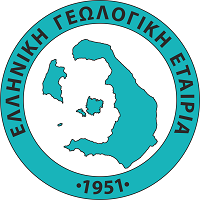Σκοπός του παρόντος άρθρου είναι η συνοπτική παρουσίαση της σημερινής επιστημονικής γνώσης πάνω στην ενεργό Τεκτονική του Αιγαίου και των γύρω περιοχών (ενεργός τεκτονική παραμόρφωση, κινήσεις λιθοσφαιρικών πλακών,κλπ.) και κυρίως η σκιαγράφηση των επιμέρους στοιχείων (μεθόδων, δεδομένων παρατήρησης, κλπ.) με τα οποία χτίστηκε η γνώση αυτή κατά τις τελευταίες τρεις δεκαετίες. Τα στοιχεία αυτά αφορούν τη χωρική κατανομή των σεισμικών εστιών, τους μηχανισμούς γένεσης των σεισμών, τη γεωφυσική δομή του φλοιού και του πάνω μανδύα, την ενεργό παραμόρφωση του φλοιού και τα σεισμικά ρήγματα. Η συνόψιση της γνώσης αυτής γίνεται και σχηματικά με την παρουσίαση ενός λιθοσφαιρικού μοντέλου του ευρύτερου χώρου της ανατολικής Μεσογείου. Αναφέρονται επίσης οι σύγχρονες απόψεις που αφορούν τα αίτια των λιθοσφαιρικών κινήσεων στο χώρο του Αιγαίου. Επισημαίνεται η συμβολή της γνώσης της ενεργού τεκτονικής του Αιγαίου στη λύση προβλημάτων άμεσης κοινωνικής σημασίας, όπως είναι η πρόγνωση των σεισμών και αναφέρεται ως παράδειγμα η συμβολή της στην μεσοπρόθεσμη πρόγνωση του πρόσφατου ισχυρού σεισμού της Σκύρου.
(EL)
The purpose of the present article is to summarize the current scientific knowledge related to the active tectonics of the Aegean and surrounding area (active deformation, lithospheric plate-motions, etc.), as well as describe the main information (data, methods, etc.) which were used to obtain this knowledge. It is pointed out that the understanding of active tectonics has not only theoretical but also practical interest, as it contributes to the solution of problems of direct social impact such as the problem of earthquake prediction. It is shown that most of our present knowledge relies on geophysical, geological and geodetic data. Due to the fact that the Aegean exhibits a variety of geomorphological structures and on going geophysical processes, it has been one of the modern "natural laboratories" where scientists from different parts of the world are working and verify various hypotheses related to our current view of World Tectonics. The Aegean exhibits the typical characteristics of a subduction area, such as the Hellenic Arc (a typical island arc), the Aegean Sea (a marginal sea with typical geomorphological characteristics) and the Collision Zone between the Balkan peninsula and the southwestern Adriatic. A large number of results concerning the Aegean area relies on the use of the spatial distribution of earthquake foci. Accurate data of the last two decades showed that most shallow earthquakes are generated on the shallowest part of the crust (upper 20km) and only along the southern Aegean subduction zone can their depth reach up to 60km. Papazachos and Comninakis (1969/70, 1971) were the first to determine the depth of 109 intermediate-depth events using PcP phases and showed that their foci lied on an amphitheatrically-shaped Benioff zone, which dips from the outer arc (Hellenic Trench) towards the concave part of the Hellenic Arc. This has been confirmed by recent studies, showing that the subduction is separated in a shallower (20-100km), small-dip (-20-30°) section where the lithospheric coupling takes place and events up to M = 8.0 occur, and a deeper (100-180km) part with higher dipping angle (-45°) where events up to M=7.0 occur. Fault plane solutions which have been constructed since the 60s were used for the study of the active tectonics in the Aegean. Their use allowed the detection of reverse faulting along the Hellenic Arc (Papazachos and Delibasis 1969), the Rhodes sinistral fault (Papazachos 1961), as well as the domination of a strong ~N-S extension field throughout the whole back-arc Aegean area (McKenzie 1970, 1972, 1978). The identification of the dextral transform Cephalonia fault (Scordilis et al., 1985) was also of significant importance for the understanding of the Aegean tectonics. This understanding was enhanced by the results obtained about the geophysical lithospheric structure of the Aegean, using either traditional or tomographic methods. These results showed strong crustal thickness variations in agreement with isostasy, detected the presence of a high-velocity subducted slab under the Aegean, with low-velocity/low-Q material in the mantle wedge above the slab, as usually anticipated for a subduction zone. The active deformation of the Aegean has been studied by seismological, geodetic and palaeomagnetic methods. The obtained results allowed the determination of various models describing the active crustal deformation in the Aegean area, showing a anticlockwise motion for Anatolia and a fast southwestern motion of the Aegean microplate at an average rate of ~3.5cm/yr relative to Europe. Similar studies have been performed for the subducted slab. The derivation of such models is further supported by geophysical and geological studies that led to the identification and classification of a large number of active faults, which are related to several strong shallow events in the broader Aegean area. In general, active seismic faults in the Aegean area can be separated in ten main groups, which exhibit different type of faulting. The active deformation and faulting characteristics of the broader Aegean area is the base of the understanding of the driving mechanisms, which control the Aegean active tectonics. In general, the convergence of Africa and Eurasia is responsible for the eastern Mediterranean subduction under the Aegean. The Arabian plate pushes the Anatolia microplate towards the Aegean, thus affecting the active tectonic setting in the Northern Aegean where the dextral motion along the northern Anatolia border continues. Also, the Apulia (Adriatic) anticlockwise rotation results in convergence along the coastal Albania and NW Greece, with trust faulting. However, the main controlling force of the active tectonics in the Aegean is the fast southwest Aegean motion and its overriding of the Mediterranean lithosphère, which is responsible for the large thrust events along the Hellenic Arc, as well as for the large seismicity of the Cephalonia (dextral) and Rhodes (sinistral) faults that are the contact between the Aegean microplate and Apulia and the eastern Mediterranean (east of Rhodes) plates, respectively.
(EN)

